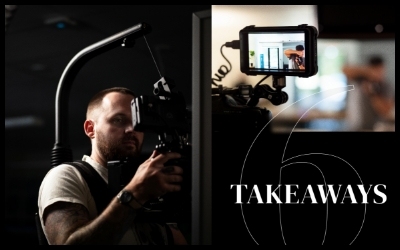Content Marketing
As marketers, we have quite a few challenges. In particular, we have to consider how our target audiences interact with our brands and how we can most effectively engage with those audiences on different mediums.
At the most basic level, we start with an understanding of what types of information are effective at moving our audiences through the consumer journey. Then, we determine the devices most likely to be used at each stage of the purchase process.
Complicating the situation even more is the non-digital environment, but for the sake of this meager blog post, we’ll focus on the digital landscape and three things to consider when targeting audiences on mobile devices.
The smaller the screen, the more valuable the view.
This rule isn’t hard and fast, and I’m sure we could debate its merit for hours at the local pub, but the truth behind the statement is that as the screen gets smaller, the relationship with the device gets more personal. For most people, their phones are personal. We use them all day, they’re never more than an arm’s length away, and they’re always there when we’re standing at a real-world cash register.
Earlier this summer, the Internet Trends report from Mary Meeker and KPCB confirmed that mobile phones are now the primary connection to the online world. Adults spend 2.8 hours per day on mobile devices, up from 45 minutes in 2011.
According to a June 2 article on DigiDay about the Internet Trends report:
The report lays out the meteoric rise of e-commerce, now 9 percent of total retail sales and $300 billion of consumer expenditures. But a more interesting trend wasn’t included in the report: the shift in a consumer’s path to purchase towards online-influenced, offline purchases. These purchases amount to a whopping $1.5 trillion in consumer expenditures, and they’re increasingly influenced by consumers’ mobile research and mobile media consumption.
Mobile is about driving immediate action.
As content and creative developers, we have to understand that mobile is primarily about driving immediate action, which makes it intensely valuable in search and social media. If I pick up my phone to perform a search, I want information to solve an immediate problem or answer an immediate question – often product-related and a lot of the time in-store. The most successful brands in mobile are the ones that are effective at providing information and solving problems.
When audiences engage with social platforms on their mobile devices, they’re scrolling, liking and sharing while also participating in the real world and looking for feedback to the things happening around them. Through rich targeting capabilities, these audience behaviors provide a great opportunity for marketers to connect with the right person, at the right time, with the right message.
State of need v. state of want
It seems obvious to capitalize on the audience’s state of need through mobile. That’s mission number one. Yet, there’s also a big opportunity to capitalize on their state of want.
For example, through geo- and behavior-based targeting, you can reach an audience attending an event. If you have 100,000 people at an event, what messages or offers are you pushing to them? How are you solving a problem, serving a need or better yet, driving a desire?
If you’re targeting in-market shoppers, are you taking advantage of a search inquiry or question to drive an up-sell? Are you making it easy for audiences to connect with you?
According to KPCB’s Internet Trends Report, mobile advertising is drastically under-indexed at 24 percent of time spent in media to 6 percent of ad spending in the USA. That’s a massive untapped opportunity for marketers willing to learn, take calculated risks, measure and optimize.


